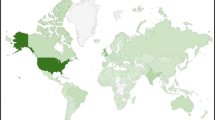Abstract
Since the introduction of digital technologies within traditional humanities education, a reconfiguration of both academic disciplines (that is the so-called posthumanities) and the subjectivities that such institutional bodies include as contexts for analysis (that is the so-called posthuman subject) are clearly in process. Such radical transformations provide a generative basis for a feminist genealogical analysis and critique. Under the pressures of this revisionary posthumanities imperative, new epistemological perspectives are emerging to reshape core values and re-inscribe the boundaries of the human. The disruptive knowledge communities of the new (digital) academy and their attendant revolutionary critical practices actively engage and promote convergent, hybrid and ontologically complex techno-human subjects, and together they re-think the role of the human in Humanities. I offer a context for understanding how feminist interventions in the field are connected to understanding and revealing the new material practices that traverse the boundaries between humans, technical agents, and others.
Similar content being viewed by others
References
Alaimo, Stacy, and Susan Hekman. eds. 2008. Material feminisms. Bloomington, IN: Indiana University Press.
Barad, Karen. 2011. Meeting the universe halfway: Quantum physics and the entanglement of matter and meaning. Durham, NC: Duke University Press.
Bartscherer, Thomas, and Roderick Coover. eds. 2011. Switching codes: Thinking through digital technology in the humanities and the arts. Chicago, IL: University of Chicago Press. Kindle version.
Bogost, Ian. 2012. Alien phenomenology, or what it’s like to be a thing. Minneapolis, MN: University of Minnesota Press.
Bolter, Jay D. 1993. Writing on the world: The role of symbolic communication in graphic computer environments. In: SIGDOC ’93 Proceedings of the 11th annual international conference on systems documentation, Waterloo, Ontario, Canada, October 05–08, 1–9.
Bolter, Jay D. 2001. Writing space: Computers, hypertext, and the remediation of print. Mahwaw, NJ: Lawrence Erlbaum and Associates.
Bolter, Jay D., and Diane Gromola. 2003. Windows and mirrors: Interaction design, digital art, and the myth of transparency. Cambridge, MA: MIT Press.
Braidotti, Rosi. 2013. The Posthuman. Cambridge: Polity Press.
Burdick, Anne, Johanna Drucker, Peter Lunenfeld, Todd Presner, and Jeffrey Schnapp. 2012. Digital_humanities. Cambridge, MA: MIT Press.
Coole, Diana, and Samantha Frost. 2010. New materialisms: Ontology, agency, politics. Durham, NC: Duke University Press.
Drucker, Johanna. 2009. Speclab: Digital aesthetics and projects in speculative computing. Chicago, IL: University of Chicago Press.
Engberg, Maria. 2011. Writing on the world: Augmented reading environments. Sprache und Literatur 42(2): 67–78.
Gold, Matthew K. 2012. Debates in the digital humanities. Minneapolis, MN: University of Minnesota Press.
Greenspan, Brian. 2011. The new place of reading: Locative media and the new place of narrative. Digital Humanities Quarterly, 5.3. http://www.digitalhumanities.org/dhq/vol/5/3/000103/000103.html. Accessed 27 November 2015.
Grosz, Elizabeth. 1994. Volatile bodies: Toward a corporeal feminism. Bloomington, IN: Indiana University Press.
Grusin, Richard. 2010. Premediation: Affect and mediality after 9/11. New York, NY: Palgrave Macmillan.
Grusin, Richard ed. 2015. The Nonhuman turn. Minneapolis, MN: University of Minnesota Press.
Hansen, Mark B.N. 2006. Bodies in code: Interfaces with digital media. New York, NY: Routledge.
Hayles, Katherine N. 1999. How we became posthuman: Virtual bodies in cybernetics, literature, and informatics. Chicago, IL: University of Chicago Press.
Hayles, Katherine N. 2002. Writing machines. Cambridge, MA: MIT Press.
Hayles, Katherine N. 2012. How we think: Digital media and contemporary technogenesis. Chicago, IL: University of Chicago Press.
Hight, Jeremy. 2006. Views from above: Locative narrative and the landscape. Leonardo Electronic Almanac. 14. 7. http://www.leoalmanac.org/wp-content/uploads/2012/09/09_JHight.pdf. Accessed 27 November 2015.
Hockey, Susan. 2004. The history of humanities computing. In A companion to digital humanities, eds. Schrelbman, Susan, Ray Seimens, and John Unsworth. Oxford. Blackwell Press. http://digitalhumanities.org:3030/companion/view?docId=blackwell/9781405103213/9781405103213.xml. Accessed 11 October 2015.
Kirby, Vicky. 2011. Quantum anthropologies: Life at large. Durham, NC: Duke University Press.
Kirschenbaum, Matthew G. 2010. What is digital humanities and what is it doing in english departments? ADE Bulletin, 150. 6.
McGann, Gerome. 2001. Radiant textuality: Literature after the world wide web. New York, NY: Palgrave Macmillan.
Parikka, Jussi. 2011. Insect media: An archeology of animals and technology. Minneapolis, MN: University of Minnesota Press.
Raley, Rita. 2009. Tactical media. Minneapolis, MN: University of Minnesota Press.
Raley, Rita. 2010. Walk this way. In Beyond the screen: transformations of literary structures, interfaces, and genres, eds. J.örgen Schäfer, and Peter Gendolla, 299–316. Bielefeld: Transcript-Verlag.
Seigworth, Gregory J., and Gregg, Melissa. eds. 2010. The affect theory reader. Durham, NC: Duke University Press.
Smelik, Anneke, and Nina Lykke. eds. 2008. Bits of life: Feminisms at the intersections of media, bioscience, and technology. Seattle, WA: University of Washington Press.
Unsworth, John. 2002. What is humanities computing and what is not?. Jahrbuch für Computerphilologie 4. http://computerphilologie.uni-muenchen.de/jg02/unsworth.html. Accessed 30 November 2015.
Wolfe, Cary. 2010. What is posthumanism? Minneapolis, MN: University of Minnesota Press.
Author information
Authors and Affiliations
Corresponding author
Editor information
Editors and Affiliations
Rights and permissions
Copyright information
© 2018 Springer International Publishing AG, part of Springer Nature
About this chapter
Cite this chapter
Holloway-Attaway, L. (2018). Embodying the Posthuman Subject: Digital Humanities and Permeable Material Practice. In: Åsberg, C., Braidotti, R. (eds) A Feminist Companion to the Posthumanities. Springer, Cham. https://doi.org/10.1007/978-3-319-62140-1_8
Download citation
DOI: https://doi.org/10.1007/978-3-319-62140-1_8
Published:
Publisher Name: Springer, Cham
Print ISBN: 978-3-319-62138-8
Online ISBN: 978-3-319-62140-1
eBook Packages: Religion and PhilosophyPhilosophy and Religion (R0)




